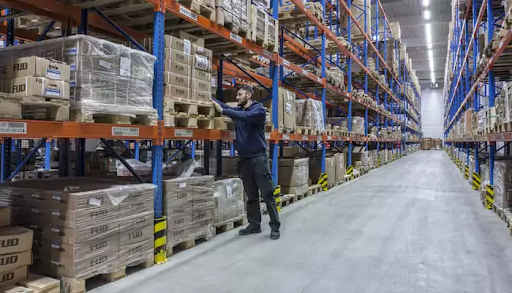Notifications

4 minutes, 44 seconds
-5 Views 0 Comments 0 Likes 0 Reviews

In an era where speed, accuracy, and cost-efficiency define warehouse success, robotics integration is revolutionizing the way warehouses operate. Warehouse robotics integration involves connecting robotic systems—like Automated Guided Vehicles (AGVs), Autonomous Mobile Robots (AMRs), and robotic picking arms—with warehouse management systems (WMS) and enterprise platforms to create a seamless, automated workflow.
This article explores what warehouse robotics integration is, why it’s essential, how it works, and when businesses should consider implementing it to elevate warehouse performance.
Warehouse robotics integration is the process of linking robotic technologies with warehouse management software and broader enterprise systems. This enables robots to perform tasks such as inventory movement, picking, packing, sorting, and replenishment, all coordinated and optimized through software control.
By integrating robotics, warehouses can automate repetitive and physically demanding tasks while improving accuracy and throughput.
Robots handle repetitive, high-volume tasks faster and with fewer errors than humans, increasing throughput and reducing bottlenecks.
Automated picking and sorting reduce mistakes, improving order accuracy and customer satisfaction.
Robotics take on dangerous or ergonomically challenging tasks, reducing workplace injuries and enabling employees to focus on higher-value activities.
Robotic systems can be easily scaled up or reprogrammed to meet changing demand or warehouse layouts.
Robots don’t tire and can operate continuously, maximizing warehouse uptime.
Robotic Hardware: Includes AGVs, AMRs, robotic arms, conveyor systems, and automated storage/retrieval systems (AS/RS).
Warehouse Management System (WMS): Software that manages inventory, tasks, and workflows, now integrated with robotic control systems.
Middleware & APIs: Communication layers that ensure seamless data exchange between robots and enterprise software.
Task Coordination: WMS sends task instructions to robots based on real-time inventory data and order priorities.
Navigation & Execution: Robots navigate warehouse aisles autonomously, using sensors and mapping technologies to avoid obstacles.
Data Feedback: Robots report status updates, errors, and performance data back to the WMS, enabling monitoring and optimization.
IoT sensors for real-time location and condition monitoring
AI and machine learning for task optimization and predictive maintenance
Cloud computing for centralized control and analytics
High order volumes requiring rapid, accurate fulfillment
Labor shortages or high turnover rates
Warehouses with repetitive, labor-intensive tasks
Desire to reduce operational costs and improve throughput
Need to support omnichannel distribution or micro-fulfillment centers
Assessment: Analyze current workflows and identify tasks suitable for automation.
Pilot Project: Deploy robots in a limited area to test integration and performance.
Full Rollout: Scale the robotic systems across the warehouse, fine-tuning workflows.
Continuous Improvement: Use analytics to optimize robot utilization and warehouse layout.
Real-World Benefits
E-commerce: Faster order processing during peak seasons with reduced errors.
Automotive: Streamlined parts handling and just-in-time inventory movement.
Healthcare: Precision in handling sensitive pharmaceutical products and medical supplies.
Warehouse robotics integration represents a strategic investment for businesses aiming to future-proof their operations. By combining intelligent robots with sophisticated software systems, warehouses can achieve unprecedented levels of speed, accuracy, and safety—key ingredients for thriving in today’s competitive market.
Embracing robotics is no longer just an option; it’s a necessity for those who want to maintain agility, reduce costs, and exceed customer expectations.
Warehouse Management Services Warehouse Robotics Integration

